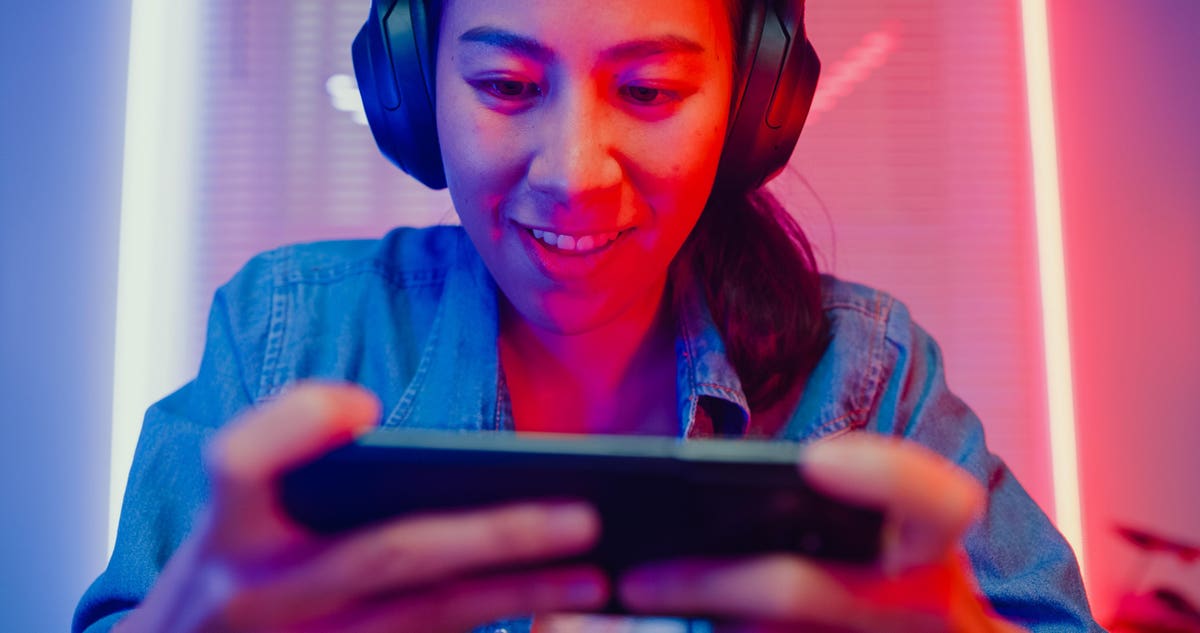The mobile games market continues to grow at speed. Figures from Statista indicate that revenue in this sector is projected to reach US$286 billion by 2023. The data firm also indicates that the number of users is expected to reach 2.3 billion by 2027.
This is an industry with everything to play for. And this is the year for female players not just to level up but perhaps even reach the top score.
Whilst many will perceive the archetypal gamer to be a younger male, this hyper-growth sector demonstrates the most radical gender rebalancing of any global industry.
Renowned female gaming stars like Guinness World Record holder Sasha Hostyn and UK-based influencer Charleyy Hodson, are commanding substantial fees in tournaments. Game studios led by women, including Nordcurrent and Glass Bottom Games, consistently outperform their male counterparts in terms of engagement and attracting new users.
The catalyst behind this paradigm shift is the advent of mobile gaming which allows users to play on smartphones and tablets. With billions of women now able to access ‘gaming on the go’, mobile gaming plays a significant role in the industry’s explosive growth.
Two in five people worldwide have engaged in online gaming in 2023 and it is mobile gaming that has been impacted most significantly. In the UK, Mintel figures reveal that mobile gaming now accounts for 61% of the overall gaming market, a significant jump from just 36% in 2015. Nearly half of all mobile gamers are women, with 65% of women aged 10-65 participating in some way.
The online gaming reach among female gamers is growing at an unprecedented rate of 33% annually, leading industry experts to anticipate a tipping point where women will dominate the gaming landscape within the next year.
Victoria Trofimova, CEO and co-founder of mobile gaming firm Nordcurrent, explains: “Gaming is no longer a hobby suited for only one gender. The rapid rise of mobile devices means gaming is with us wherever we go, making it easier for many more women to play. You don’t need endless expensive kit, just your tablet or phone.”
As female gamers emerge as a powerful force, gaming companies must swiftly adapt to embrace this new and highly valuable demographic. Industry leaders recognize that agile companies who do cater to female gamers, will outpace legacy businesses with a sole focus on male players.
Noted novelist and gamer Sarah Maria Griffin supports this: “There’s a huge, lush, growing world of small and independent studios that are run by women making really interesting work. That’s where the good stuff is happening, just outside of that huge, glaring, moneyed, mainstream world and it is generally more friendly to women.”
Data from Meta (formerly Facebook), a leading player in the sector, shows that female members of gaming groups are six times more active than their male counterparts. This heightened activity is mirrored in the gameplay itself.
The widespread adoption of gaming on mobile phones means that women offer not only greater brand loyalty but they also play more frequently. Consequently, they have become a crucial target market for gaming companies and advertisers at large.
To capture this demographic, gaming companies are competing to create mobile games specifically tailored to diverse female audiences with empowering and uplifting messages. Referred to as “cosy gaming,” these female-friendly games offer a more thoughtful form of escapism compared with the high octane button-bashing typically associated with male-focused games.
Existing innovative games include Escape Jaya from Rose 2 Rebel Entertainment which features a black female undercover agent as the main protagonist, while A Year of Springs explores lesbian themes through lead characters Haru, Erika, and Manami, allowing users to control the story’s endings.
This year alone, 20 games have been released featuring lesbian, trans, and pansexual characters, further deviating from the traditional superhero-style characters favored by male gamers. Female-focused firms are expanding the range of genres, including role-playing games (RPGs), complex strategy games, and multiplayer online battle arenas (MOBAs), thereby redefining what a “female game” looks like.
The mindset shift towards women in gaming can be partially attributed to the pandemic, which saw millions of women turn to gaming during lockdown. Gaming provided not only a new hobby but also an avenue to build community connections and online friendships.
Top Brazilian female gamer Nicolle Merhy, founder and CEO of Black Dragon e-sports, attests to this: “The digital universe grew immensely during the pandemic. I witnessed a shift in how brands perceived the game scene. Companies were forced to transform their mindset to survive.”
Female-led firms are now propelling the gaming sector’s development further, with many seeking opportunities to monetize women’s brand loyalty beyond in-app purchases or paid games.
Mobile fashion game PocketStyler is blurring the line between in-game and real-world (IRL) activities by partnering with fashion brands and collaborating with London-based designer David Koma to create in-game outfits for player avatars.
With over 310 trillion possible outfit combinations, PocketStyler allows real-world designers to observe consumer behavior and test new designs with a virtual audience. The game also directs users to the designers’ websites, creating the ultimate commercial feedback loop.
The focus on women extends beyond players to studios and game stars; the future of the industry is undeniably female. Currently, only 28% of the industry identifies as female, but with over a third of higher education STEM students now women, the supply pipeline of female coders and game designers is expanding. Similarly, the number of female gamers and e-sports stars is rising, with many earning six-figure salaries and amassing millions of online followers.
Its a win, win, win scenario as more female gamers benefit the industry, advertisers, brands and of course the gamers themselves, thanks to a wealth of new choice.
As Trofimova continues : “Women combat negative stereotypes, expand the sector’s thinking and create positive and engaged communities. Gaming is supposed to bring the world together to have fun and with more women on board, that’s what it will finally do.”
Read the full article here





